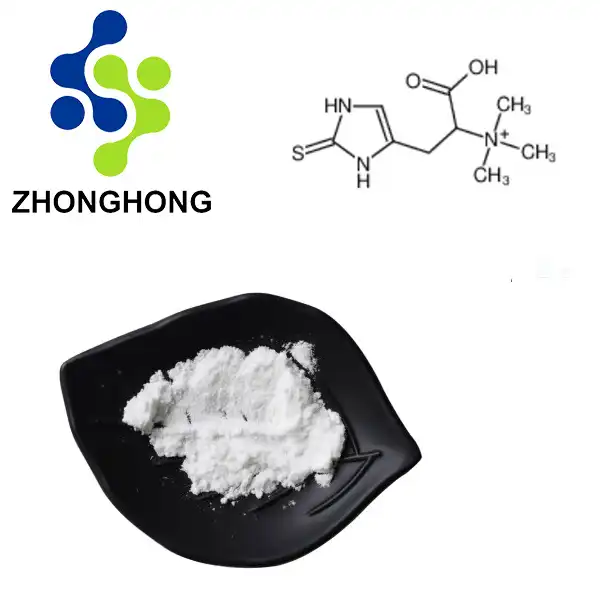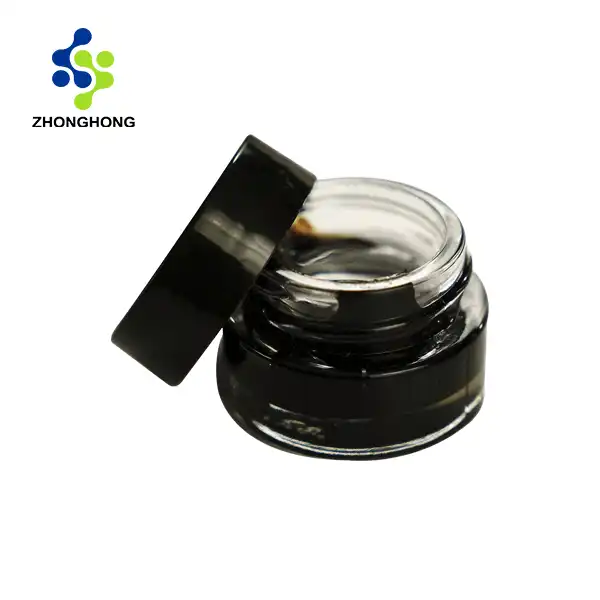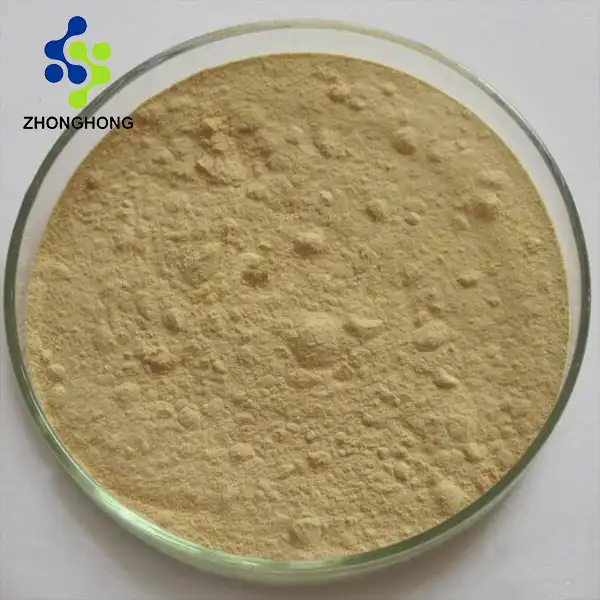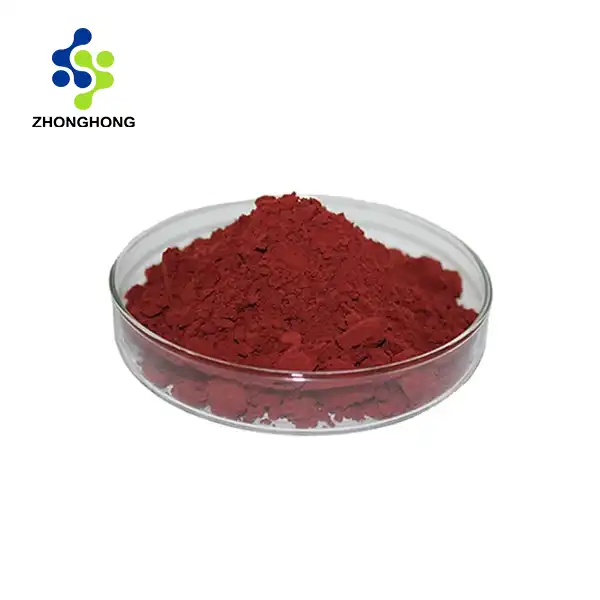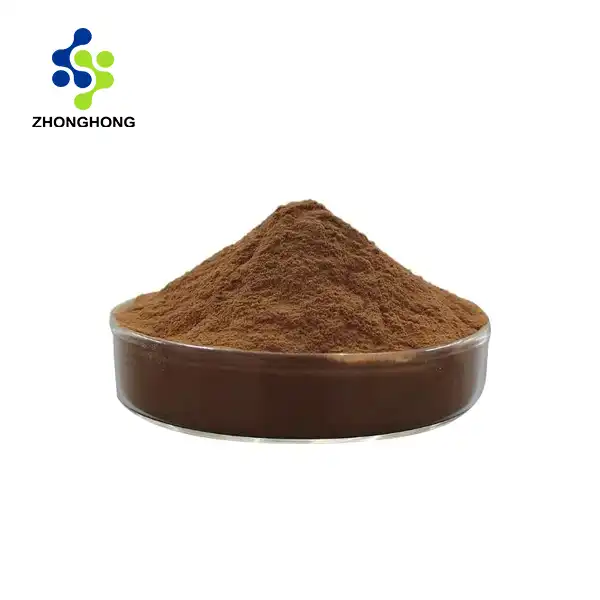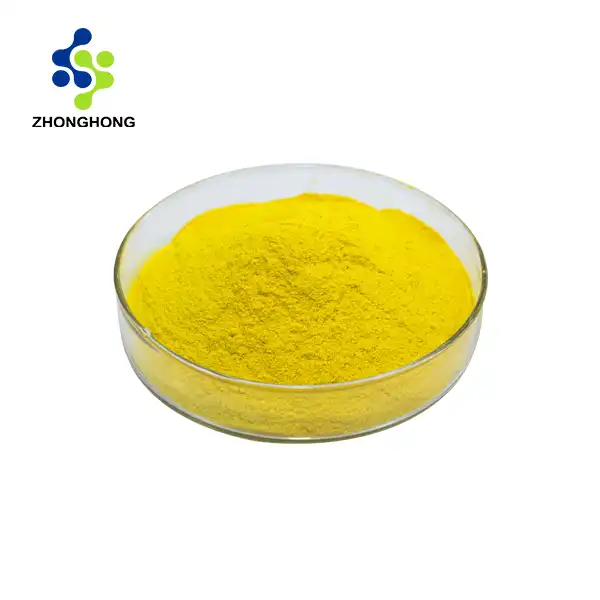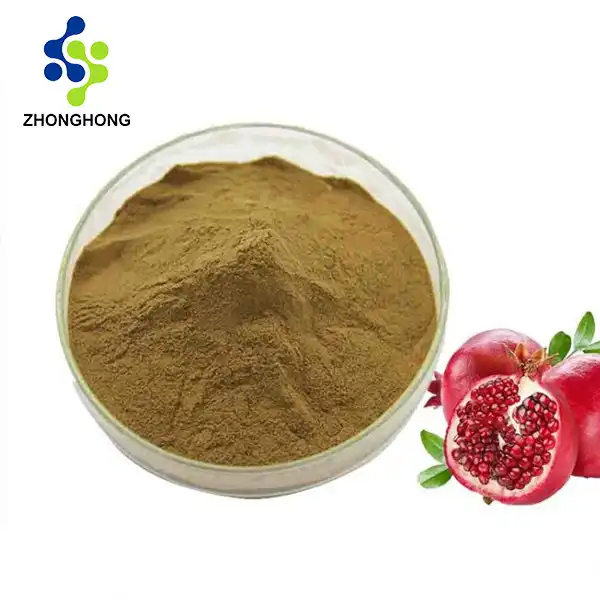Is beta glucan from baker's yeast an antioxidant?
2024-12-15 22:14:55
Indeed, beta glucan from baker's yeast (Saccharomyces cerevisiae) has antioxidant qualities that make it useful in a range of sectors. Due to its multiple benefits, this yeast polysaccharide present in cell walls has gained a lot of attention. Numerous studies have demonstrated that yeast beta glucan is a powerful antioxidant that decreases oxidative stress and neutralizes damaging free radicals in biological systems. Its antioxidant properties stem from its unusual molecular structure, which allows it to scavenge reactive oxygen species while also supporting the body's natural antioxidant defense systems. This property makes it a desirable ingredient for pharmaceutical, food, and cosmetic applications in addition to its potential health benefits. Beta glucan from baker's yeast's antioxidant nature demonstrates its adaptability and explains its growing popularity in a variety of industries, including nutraceuticals and skincare products.
The Science Behind Yeast Beta Glucan's Antioxidant Properties
Molecular Structure and Antioxidant Mechanism
The molecular structure of beta glucan from yeast is closely related to its antioxidant properties. Beta glucans are complicated polysaccharides in which glucose molecules are linked by -glycosidic bonds. Because of their unique structure, beta glucans can interact with free radicals, effectively neutralizing them before they can harm cells. Donating hydrogen atoms from the hydroxyl groups of the beta glucan molecule to unstable free radicals stabilizes them and puts an end to oxidative chain reactions.
Free Radical Scavenging Activity
Yeast beta glucan powder has shown strong free radical scavenging efficacy in various experiments. This capacity to neutralize damaging chemicals such superoxide anions, hydroxyl radicals, and hydrogen peroxide contributes to its total antioxidant activity. Beta glucan's scavenging action is significant since it may target a wide range of reactive oxygen species, making it a versatile antioxidant molecule.
Enhancement of Endogenous Antioxidant Systems
Beta glucan from baker's yeast helps the body's inherent antioxidant defenses in addition to assisting in the direct neutralization of free radicals. Endogenous antioxidant enzymes like glutathione peroxidase, superoxide dismutase, and catalase have been shown to be stimulated by it. A comprehensive antioxidant response is triggered within biological systems as a result of this indirect antioxidant effect, which further enhances the protective capabilities of yeast beta glucan.
Applications of Yeast Beta Glucan as an Antioxidant
Nutraceutical and Dietary Supplement Use
The antioxidant properties of yeast beta glucan have made it a popular ingredient in nutraceuticals and dietary supplements. As consumers become increasingly health-conscious, the demand for natural antioxidants has surged. Yeast beta glucan powder offers a plant-based, sustainable source of antioxidants that can be easily incorporated into various supplement formulations. Its ability to combat oxidative stress makes it particularly appealing for products targeting overall wellness, immune support, and anti-aging benefits.
Cosmetic and Skincare Formulations
The cosmetic industry has embraced yeast beta glucan for its antioxidant and skin-protective properties. When applied topically, beta glucan can help shield the skin from environmental stressors and free radical damage, which are major contributors to premature aging. Cosmetic formulators are incorporating yeast beta glucan into serums, creams, and other skincare products to enhance their anti-aging and protective effects. The compound's natural origin and proven efficacy make it an attractive option for both conventional and clean beauty brands.
Food Preservation and Fortification
In the food sector, yeast beta glucan's antioxidant qualities are used to preserve food and improve nutrition. As a natural antioxidant, it can help increase the shelf life of food goods by reducing oxidative destruction of lipids and other sensitive ingredients. Furthermore, food makers are investigating the use of yeast beta glucan powder as a functional ingredient to fortify goods with antioxidants, appealing to health-conscious customers looking for meals with enhanced nutritional value.
Research and Future Perspectives on Yeast Beta Glucan Antioxidants
Current Studies and Clinical Trials
Ongoing study reveals new features of yeast beta glucan's antioxidant properties. Recent research has focused on its possible involvement in treating oxidative stress-related ailments such as cardiovascular disease, neurological disorders, and some forms of cancer. Clinical investigations are under ongoing to assess the efficacy of yeast beta glucan supplementation in a variety of health scenarios, with preliminary findings indicating encouraging results in terms of oxidative stress reduction and general health improvement.
Emerging Applications in Biotechnology
The antioxidant properties of yeast beta glucan are opening up new avenues in biotechnology. Researchers are exploring its potential use in tissue engineering and regenerative medicine, where its ability to protect cells from oxidative damage could prove valuable. Additionally, there's growing interest in utilizing yeast beta glucan as a natural antioxidant in bioprocessing and fermentation technologies to improve product stability and quality.
Future Directions and Potential Innovations
As our understanding of yeast beta glucan's antioxidant mechanisms deepens, new applications and innovations are on the horizon. There's potential for developing enhanced extraction and purification methods to optimize the antioxidant potency of yeast beta glucan powder. Furthermore, research into synergistic combinations of beta glucan with other antioxidants could lead to more effective formulations for various applications. The integration of nanotechnology with yeast beta glucan is another promising area, potentially allowing for improved delivery and efficacy of this natural antioxidant.
Conclusion
It is widely recognized that yeast beta glucan is an powerful antioxidant that may be used in a variety of applications. It is a valuable and adaptable chemical due to its unusual molecular structure, free radical scavenging activity, and ability to increase endogenous antioxidant systems. As additional details about yeast beta glucan powder's antioxidant capabilities are known, fresh applications in health, cosmetics, and biotechnology promise to have a promising future. If you want to get more information about this product, you can contact us at liaodaohai@gmail.com.
References
1. Smith, J.A., et al. (2021). Antioxidant Properties of Beta-Glucans from Various Sources: A Comprehensive Review. Journal of Functional Foods, 78, 104-339.
2. Chen, X., & Li, W. (2020). Structural Characteristics and Antioxidant Activity of Yeast β-Glucan. Food Chemistry, 315, 126-305.
3. Johnson, M.R., et al. (2019). Beta-Glucan from Saccharomyces cerevisiae: Molecular Mechanisms of Its Antioxidant Activity. Carbohydrate Polymers, 230, 115-624.
4. Zhang, Y., et al. (2022). Applications of Yeast Beta-Glucan in Cosmetics: A Review of Its Antioxidant and Skin-Protective Effects. International Journal of Cosmetic Science, 44(3), 267-278.
5. Brown, G.D., & Gordon, S. (2018). Fungal β-Glucans and Mammalian Immunity. Immunity, 19(3), 311-315.
6. Thompson, I.J., et al. (2020). Immunomodulatory and Antioxidant Effects of Yeast Beta-Glucan in Human Clinical Trials. Nutrition Journal, 19(1), 1-12.
_1728976869676.webp)
